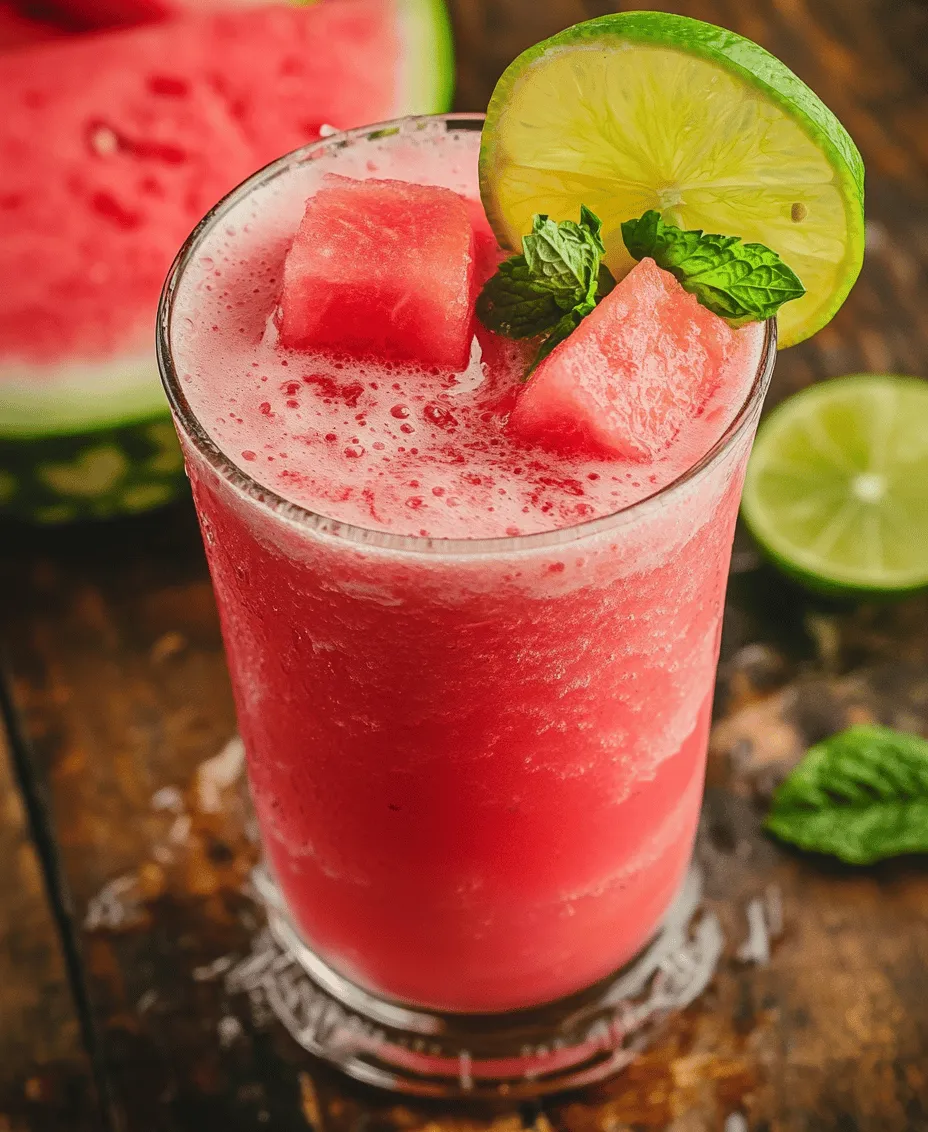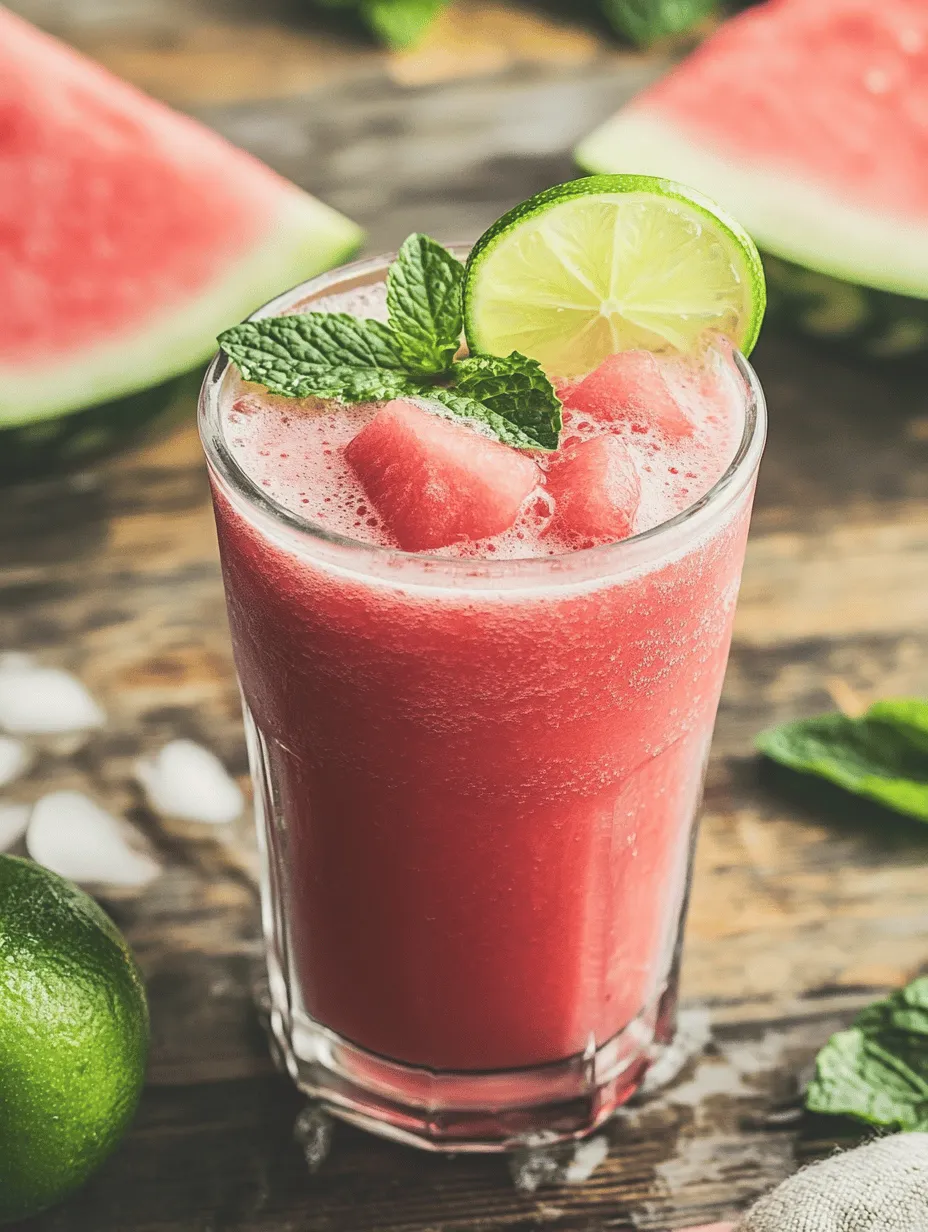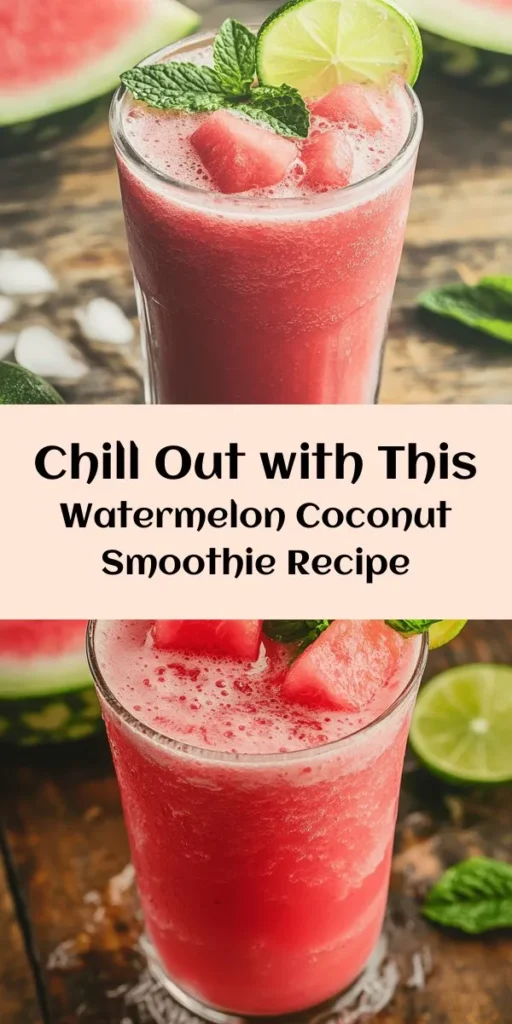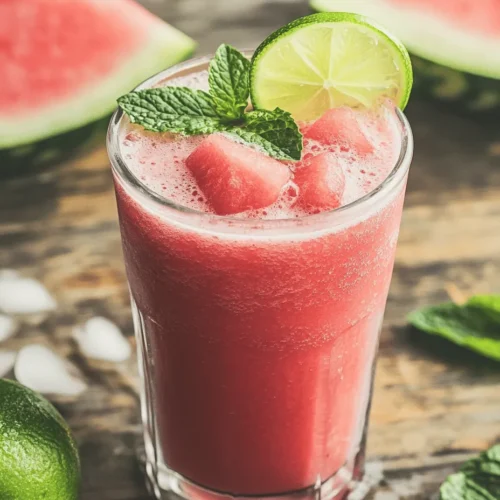Introduction
Smoothies have surged in popularity as a go-to beverage choice for those seeking a quick and nutritious option. These vibrant, blended drinks offer a perfect balance of flavor and health benefits, making them a beloved choice for breakfast, snacks, or even light meals. Among the myriad of smoothie recipes, the Watermelon Smoothie with Coconut Water stands out as a particularly refreshing and revitalizing option. This delightful concoction not only tantalizes your taste buds but also provides an array of health benefits, making it a must-try for smoothie enthusiasts and beginners alike.
Watermelon, with its high water content, is the star of this smoothie, providing hydration and natural sweetness. When combined with coconut water, it creates a tropical fusion that is both delicious and incredibly nourishing. Coconut water, often referred to as nature’s sports drink, is rich in essential electrolytes, making this smoothie an excellent choice for replenishing fluids after exercise or on a hot summer day. Furthermore, the addition of Greek yogurt adds a creamy texture and a boost of protein, making this smoothie a more substantial option.
Creating smoothies at home allows you to control the ingredients and customize flavors to your liking. It’s a joyful experience to blend together fresh produce and watch as they transform into a refreshing drink. Let’s dive into the details of the ingredients that make up this delicious Watermelon Smoothie with Coconut Water and explore the steps to craft this revitalizing beverage.
Understanding the Ingredients
Watermelon: The Star of the Smoothie
Watermelon is not just a summer favorite; it is also packed with nutrients and health benefits. This juicy fruit is composed of about 92% water, making it one of the most hydrating foods available. It is low in calories yet high in vitamins and minerals, including vitamin C, vitamin A, and potassium. Watermelon is also rich in antioxidants, particularly lycopene, which has been linked to several health benefits, including heart health and reduced inflammation.
When selecting a ripe watermelon, look for one that feels heavy for its size and has a uniform shape. The skin should be firm and have a dull finish, indicating ripeness. A yellow spot on the underside can also indicate that it ripened on the vine, which usually means better flavor. Tapping the watermelon should produce a deep sound, suggesting it is full of juice and ready to eat.
Exploring Coconut Water
Coconut water is another key ingredient in this refreshing smoothie. Often mistaken for coconut milk, coconut water is the clear liquid found inside young coconuts and is renowned for its hydrating properties. It contains a wealth of electrolytes, including potassium, sodium, and magnesium, making it an excellent choice for rehydration, especially after physical activity.
Coconut water’s naturally sweet and nutty flavor enhances the overall taste of the smoothie while providing a subtle tropical essence. Unlike many other liquid bases for smoothies, such as fruit juices or milk, coconut water is low in calories and sugar, making it a healthier alternative. Its light texture allows the flavors of the other ingredients, like watermelon and lime, to shine through without being overwhelming.
The Role of Greek Yogurt
Greek yogurt brings a creamy, rich texture to the Watermelon Smoothie while also adding a healthy dose of protein. This strained yogurt is thicker than regular yogurt and contains probiotics, which are beneficial for gut health. The protein content makes the smoothie more filling, perfect for those looking to make it a meal replacement.
When choosing Greek yogurt, you have the option of plain or flavored varieties. Plain Greek yogurt allows you to control the sweetness of your smoothie, while flavored yogurts can add an extra layer of taste. However, be wary of flavored options that may contain added sugars. For a healthier choice, opt for plain Greek yogurt and sweeten your smoothie to taste with natural sweeteners.
Sweeteners: Honey vs. Agave Syrup
To enhance the natural sweetness of the watermelon, you may want to add a sweetener. Honey and agave syrup are both popular options, but they differ slightly in flavor and nutritional value. Honey is a natural sweetener with antimicrobial properties and a distinct flavor. It contains trace vitamins and minerals but has a higher glycemic index than agave syrup.
Agave syrup is derived from the agave plant and is often marketed as a healthier alternative to sugar due to its lower glycemic index. It has a milder flavor and dissolves easily in liquids, making it a great addition to smoothies. However, those with dietary restrictions or sugar sensitivities should consider using a natural sweetener like stevia or monk fruit extract as alternatives.
Fresh Lime Juice: A Zesty Kick
Fresh lime juice plays a crucial role in elevating the flavor profile of this smoothie. Its tartness balances the sweetness of the watermelon and coconut water, adding a refreshing zing that makes each sip invigorating. Lime juice is also rich in vitamin C and antioxidants, contributing to the overall health benefits of the smoothie.
The acidity of lime juice helps to brighten the flavors of the other ingredients, ensuring that the smoothie is not overly sweet. Additionally, lime juice can help preserve the vibrant color of the smoothie, making it visually appealing.
Fresh Mint Leaves as Garnish
To finish off your Watermelon Smoothie, a sprinkle of fresh mint leaves not only enhances the visual appeal but also adds a burst of flavor. Mint’s refreshing taste complements the fruity notes of watermelon and coconut water, creating a harmonious blend. Moreover, mint has been known to aid digestion and can provide a cooling effect, making it an ideal garnish for this smoothie.
Step-by-Step Guide to Making the Watermelon Smoothie
Now that we’ve explored the ingredients and their benefits, it’s time to dive into the preparation of your refreshing Watermelon Smoothie with Coconut Water. The first step involves preparing the watermelon, which sets the stage for this delicious drink.
Preparing the Watermelon
1. Selecting and Washing: Start by choosing a ripe watermelon, as previously described. Once you’ve selected your watermelon, wash it thoroughly under cool running water to remove any dirt or pesticides from the surface.
2. Cutting the Watermelon: Use a sharp knife to slice the watermelon in half lengthwise. Depending on the size of the watermelon, you can work with one half at a time or cut both halves into quarters for easier handling.
3. Removing the Flesh: Using a spoon or melon baller, scoop out the bright red flesh of the watermelon, discarding the rind. Aim to remove as many seeds as possible, as they can affect the texture of the smoothie.
4. Chilling the Watermelon: For an extra refreshing smoothie, consider chilling the watermelon flesh in the refrigerator for about 30 minutes before blending. This step is optional but can enhance the overall cooling effect, especially on a hot day.
5. Measuring the Quantity: Measure out about 2 cups of watermelon flesh for the smoothie. This amount typically yields two servings, making it perfect for sharing or storing for later.
With the watermelon prepared, you’re now set to combine it with the other ingredients in the blender. The following steps will guide you through the blending process and ensure you create a perfectly smooth and delicious Watermelon Smoothie with Coconut Water.
Stay tuned for the next part, where we will cover the blending process, finalize the smoothie, and explore tips to customize your drink further!




